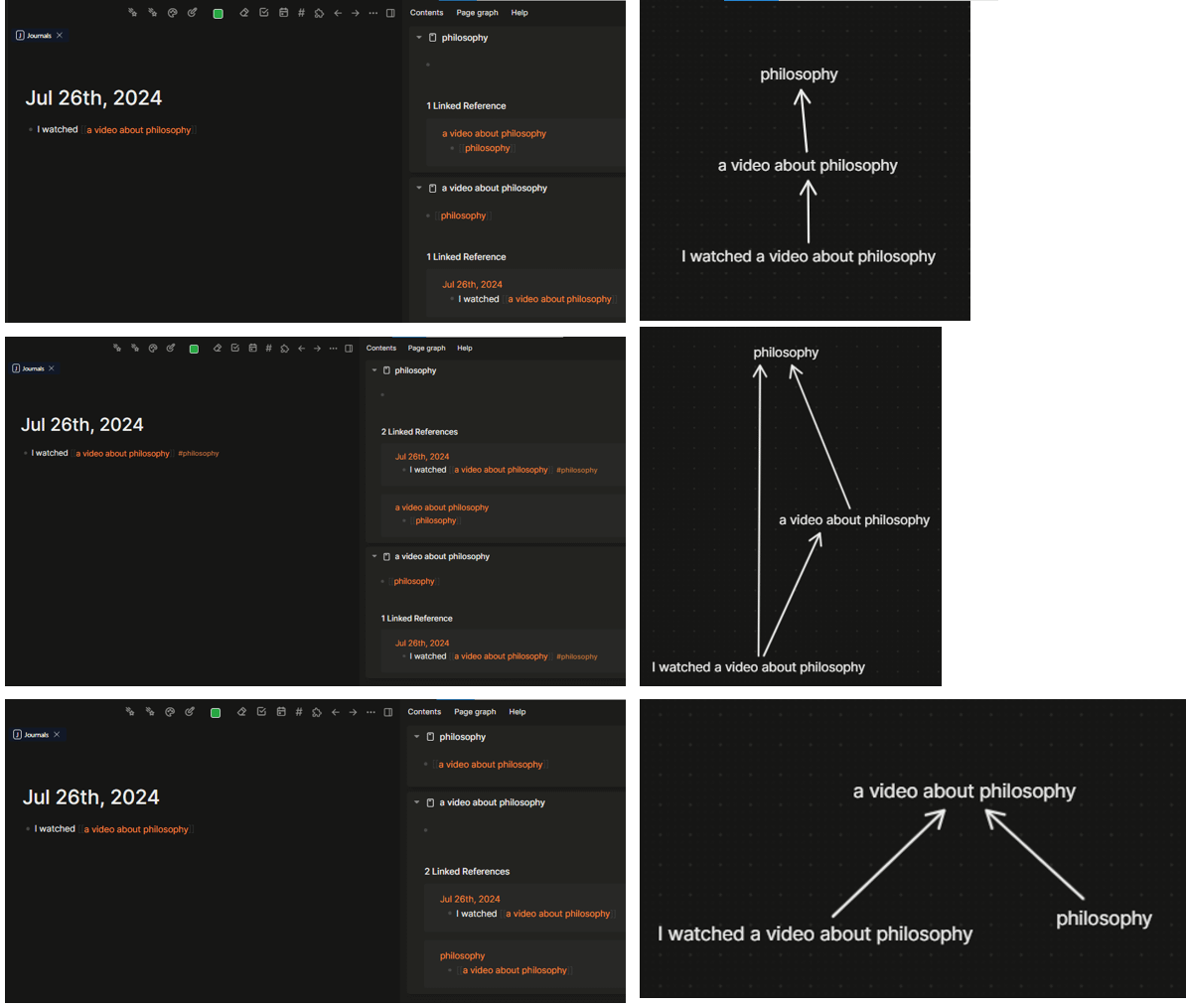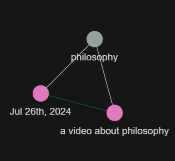TL;DR at the bottom
link to Logseq subreddit post
link to Logseq forum post
I have tried almost all note-taking apps (Notion, Obsidian, Roam Research, Remnote, Anytype, etc. and Logseq (what I’ve settled for now)) and something about them always confused me. I now realize that it might be because of this:
We go into using note-taking apps because we want to see the relations/connections/links of notes, basically what’s being represented in the graph view, right? Well the way note-taking apps go about it, using linked references, is not actually doing that.
Here’s what I mean in the context of a current Logseq graph. When you embed a block or paste its reference inside/under another block, what you get is two things:
- a first block that has a second block inside/under it, and
- the second block that just has information saying that it is inside or under the first block (a linked reference)
I realized that this is what hurts our brains when we’re note-taking. Because this is not the same as what’s being shown in the graph view. This creates a one-wayness or hierarchy in our minds where there isn’t supposed to be:
What we actually want to see is this:
The way to solve this is to have a new “relation” feature or property. This is the page relation property in Notion but up to the block level.
Why a new “relation” feature? I realized that it’s because a relation/connection/link is fundamentally two-way/bidirectional. In our minds, when an object is “related” to a second object, it means that the second object is also, equally, at the same level, “related” to that first object. Whether that relation is hierarchical or not, they have an equal relation/connection/link to each other. This is what’s shown on the graph view. This is what we actually want to see when we’re using note-taking apps like Logseq.
So in a Logseq graph with the new relation feature, there won’t be linked references. When you embed a block or paste its reference inside/under another block it instead creates a relation, which you can see in both blocks. You get:
- a first block that has a second block inside/under it with a relation saying it’s related to the second block, and
- the second block that has a relation saying it’s related to the first block
(Though, it would be best if the automatic creation of a relation when referencing a block is just an option you can turn on or off.) Also, you can relate a block to another block without making a reference, which removes clutter. This is what it could look like:
another example:
Notice how “I watched a video about [[philosophy]]” references the “philosophy” page, while “I read a book about philosophy” doesn’t but both have a relation to “philosophy”
We can maybe then sort and filter these relations or even have a label that the relation is a reference, or hierarchy (parent or child), but that’s for another time.
Another benefit of having this separate relation feature, in the context of Logseq and other outliners, is that it frees each block to be its own thing. There can be no “real” hierarchy of blocks. The outline view can simply be used to visually show hierarchy like, “by the way this block can be viewed as being lower in this arbitrary hierarchy I made with this other block.”
What do you think?
TL;DR What’s been confusing me about Logseq and note-taking apps is that I’ve been trying to see the relations/connections/links of notes, a two-way relationship, through linked references, a one-way relationship. The solution is to have a new relation feature like the page relation property in Notion but up to the block level.




![r/logseq - "I watched a video about [[philosophy]]" references the "philosophy" page, while "I read a book about philosophy" doesn't but both have a relation to philosophy](https://discuss.logseq.com/uploads/default/original/3X/9/4/9462434de5862f20920ee7bfeca11bc1ca318cd4.png)